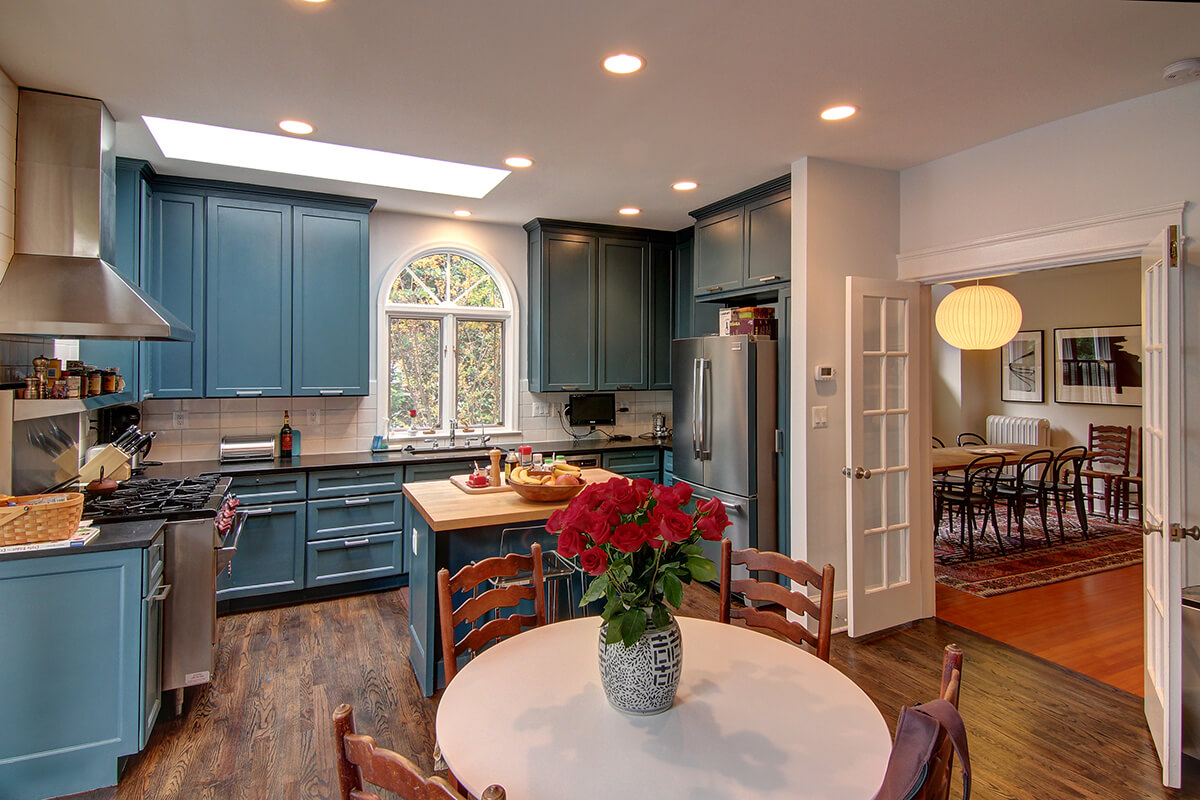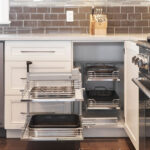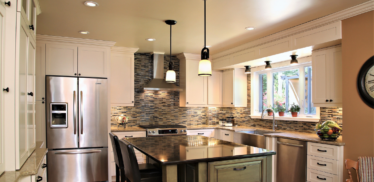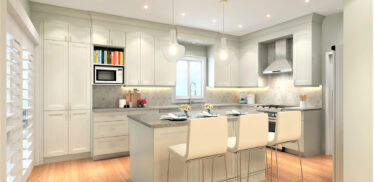Anne-Marie Brunet, CKBD, CAPS
If the kitchen is the heart of the home, shouldn’t everyone be able to use it? With an extra thought, the kitchen can accommodate all — from little ones baking their first batch of cookies to baby boomers beginning to deal with joint issues, to those already dealing with physical limitations. Kitchens require more attention than ever if we are to truly embrace the concept of universal design.
Universal design is simple and intuitive, with features and products that allow people of all ages and physical abilities to live comfortably and safely. For a space as busy and important as the kitchen, this can only be a good thing. Here’s how to adapt some basic areas in the kitchen using universal design principles.
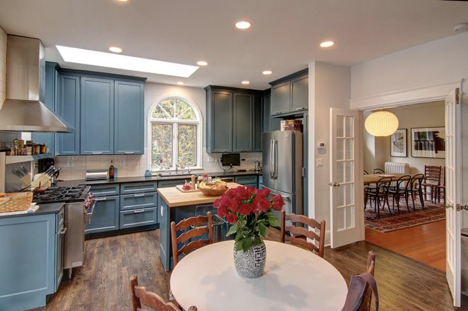
Doors
If your kitchen has a door, ensure it is at least 36 inches wide to offer a clear opening for those using an assisted device. The double doors to this kitchen more than sufficiently qualified.
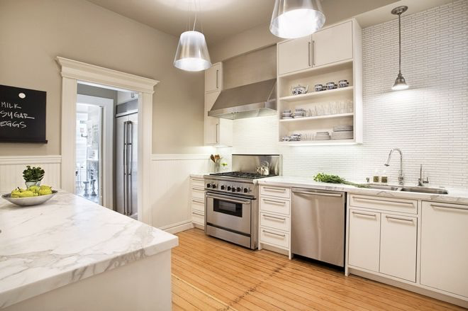
If you can get rid of the door entirely, even better. This eliminates a common obstacle of getting to the kitchen: having to push open or operate any kind of door hardware while balancing armloads of groceries.
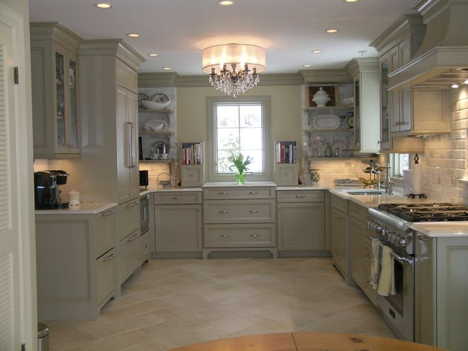
Traffic
When planning a kitchen, opt for 42 inches to an optimal 48 inches between counters. This allows for more than one cook in the kitchen and also lets anyone in a wheelchair or walker easily function without banging into cabinets. In a U-shape kitchen, plan for 60 inches of clearance minimum between opposing counters. This allows a wheelchair to have a comfortable turning radius.
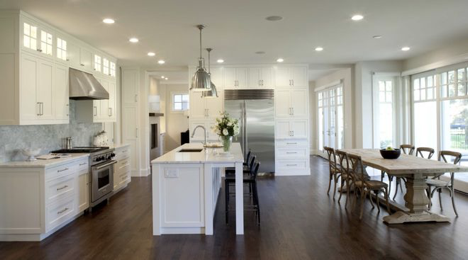
Larger open kitchens and spaces seem to function best when obstacles are completely eliminated.
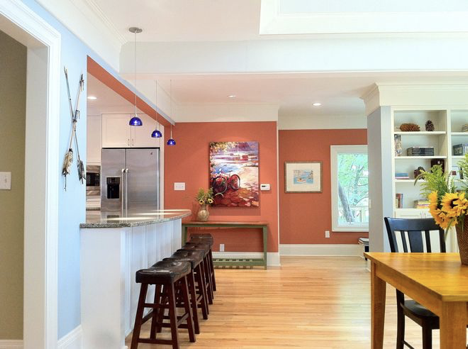
If traffic passes behind a seated diner at a peninsula or island, plan for at least 60 inches of space behind to allow passage for a person in a wheelchair.
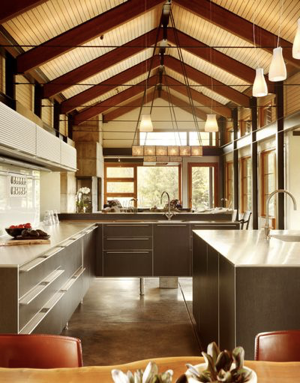
Raised toe kicks allow greater foot and toe clearance for anyone in a wheelchair, and let them get closer to the countertop or workstation. The toe kicks should be a minimum of 9 inches high. The kitchen shown here just about eliminates them altogether, opting for contemporary furniture legs for support that are still easy to work around.
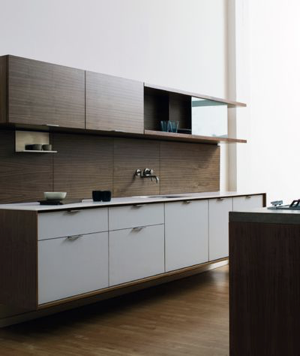
Another alternative to freeing up toe space is to have wall-mounted cabinets, eliminating the toe kick altogether. This option allows for complete customization of countertop height and toe space.
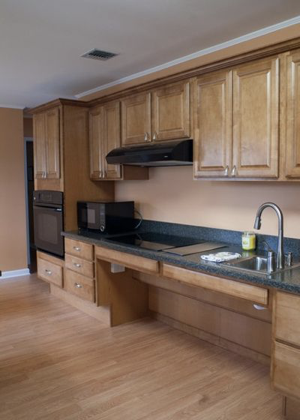
Workstations
If someone is in a wheelchair, plan workstations that have clear space below them to allow for easy reach to fixtures. Knee space should be a minimum of 30 inches wide.
Ensure that any exposed plumbing is insulated, covered or behind door panels to prevent any burns from hot pipes. You could also have retractable doors closing off space below the workstation when it’s not in use.
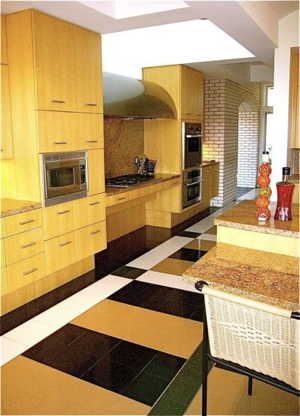
Here the cooktop also has clear space below for easy access.
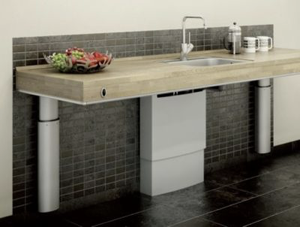
Pressalit Care Indivo Electric Lift Worktop Frame (Discontinued) – GBP 1,919.77
Adjustable countertops and cabinets are another great features to consider when planning your kitchen. Pressalit Care’s height-adjustable lifting units enable you to create an optimal and ergonomically correct working environment, allowing everyone to work safely, together or independently.
Heights can be adjusted manually, with a hand crank, or at the push of a button once it’s wired in by your electrician.
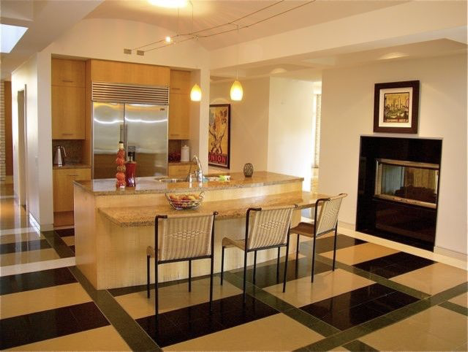
Counters
If you have room for an island or a peninsula that accommodates seating, make the counter 30 inches high — the same as table height. This offers optimal seating for everyone, regardless of age or mobility. Little ones can shimmy up onto a regular chair, and older folk don’t have to hoist themselves up onto a bar stool. A wheelchair can just glide on in too.
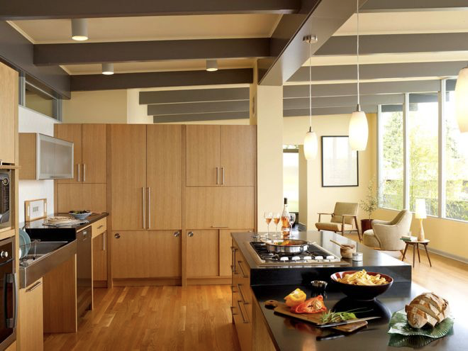
Include at least one workspace countertop at a height of 30 inches or less, to accommodate someone sitting while doing tasks. Conversely, if the person using this space is very tall, consider raising the countertop to a height that will keep things ergonomic.
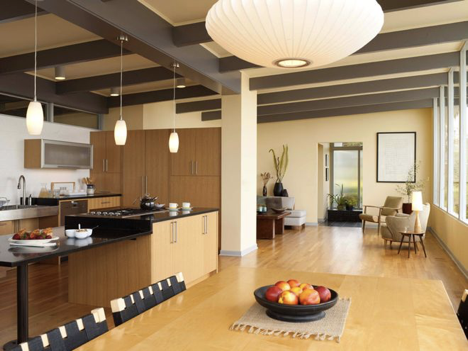
This extended lowered counter is open underneath and accessible from both sides, inviting little ones or those in chairs to take part in the daily cooking activities. Chairs or stools can also slide under the counter, turning it into a makeshift snack bar.

